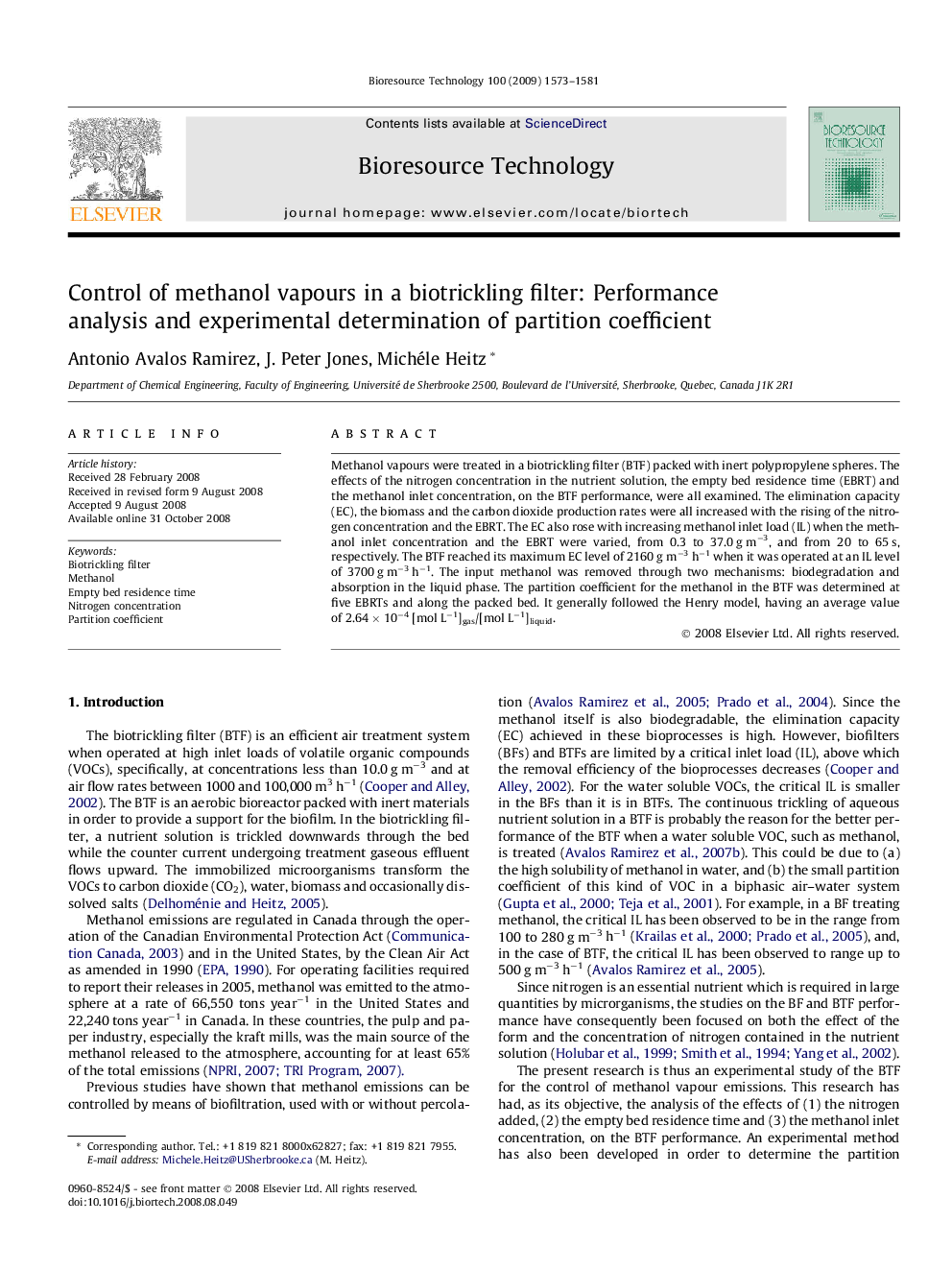| Article ID | Journal | Published Year | Pages | File Type |
|---|---|---|---|---|
| 686042 | Bioresource Technology | 2009 | 9 Pages |
Methanol vapours were treated in a biotrickling filter (BTF) packed with inert polypropylene spheres. The effects of the nitrogen concentration in the nutrient solution, the empty bed residence time (EBRT) and the methanol inlet concentration, on the BTF performance, were all examined. The elimination capacity (EC), the biomass and the carbon dioxide production rates were all increased with the rising of the nitrogen concentration and the EBRT. The EC also rose with increasing methanol inlet load (IL) when the methanol inlet concentration and the EBRT were varied, from 0.3 to 37.0 g m−3, and from 20 to 65 s, respectively. The BTF reached its maximum EC level of 2160 g m−3 h−1 when it was operated at an IL level of 3700 g m−3 h−1. The input methanol was removed through two mechanisms: biodegradation and absorption in the liquid phase. The partition coefficient for the methanol in the BTF was determined at five EBRTs and along the packed bed. It generally followed the Henry model, having an average value of 2.64 × 10−4 [mol L−1]gas/[mol L−1]liquid
